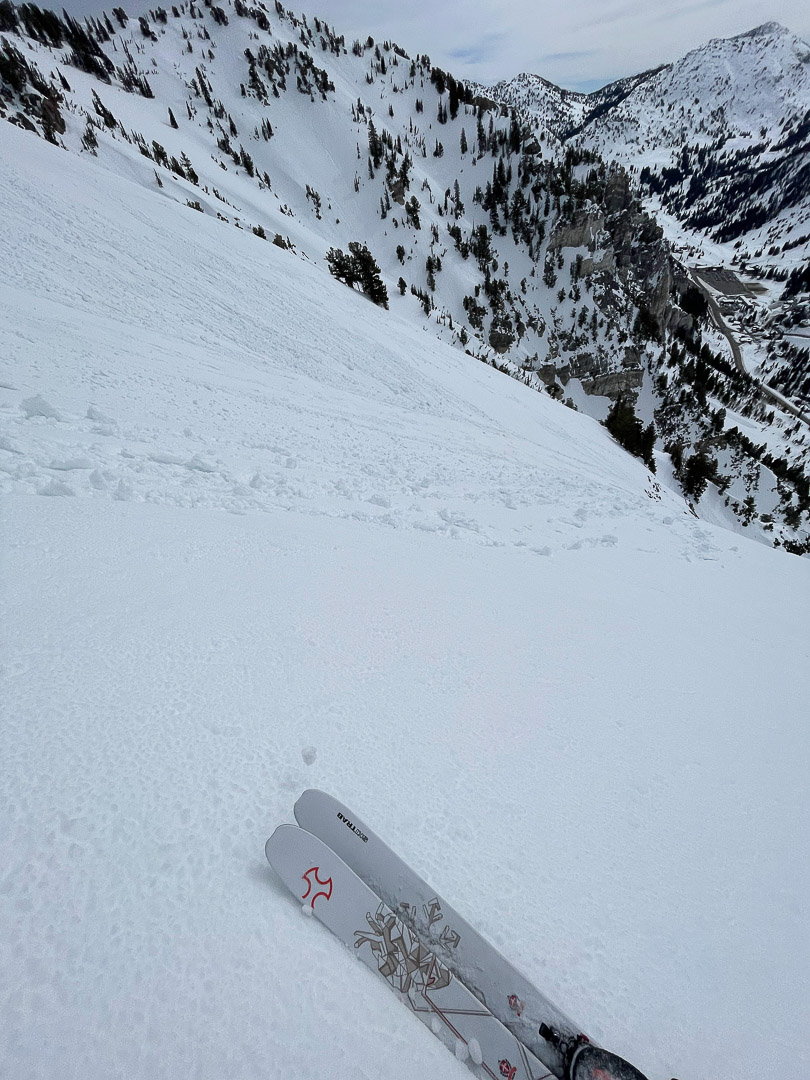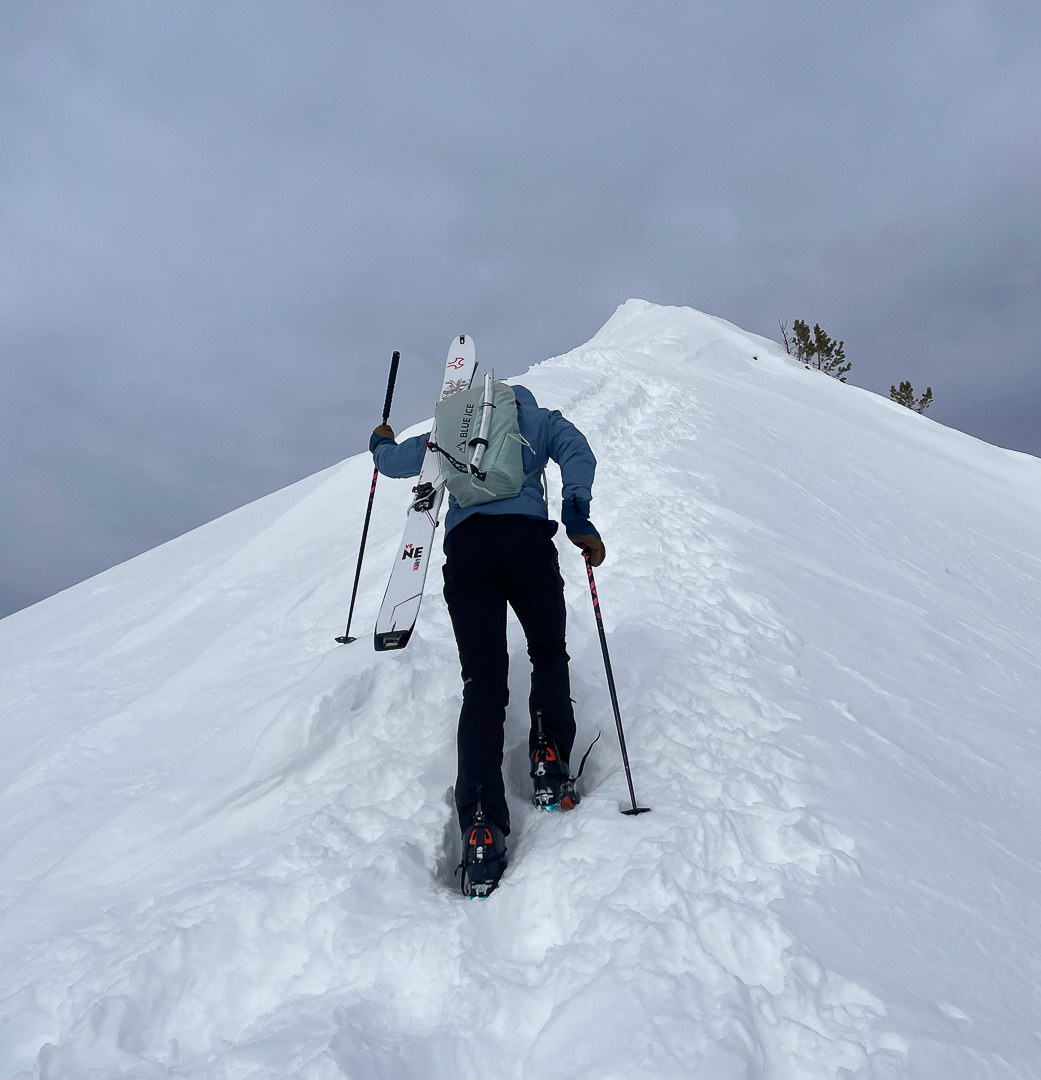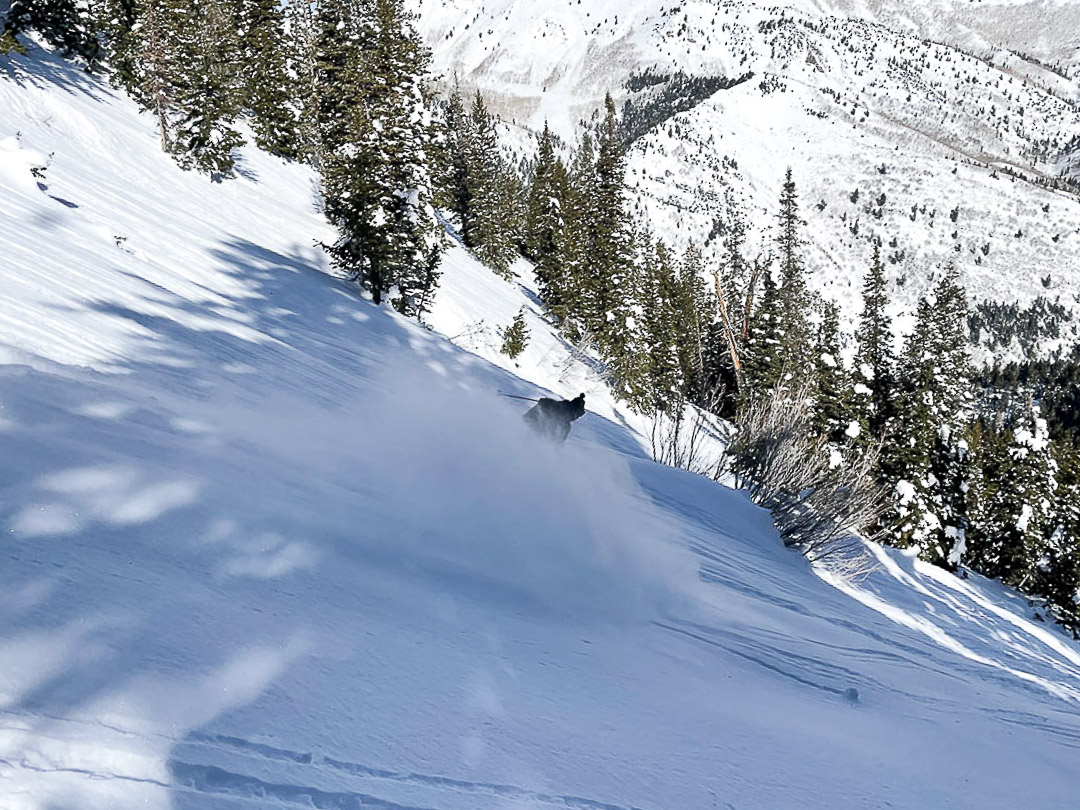The Ski Trab Neve blends free ride aspirations and firm-snow steep skiing chops.
Ski Trab may be a new name to readers of The High Route. Hailing from Bormio, Italy, Ski Trab is a renowned manufacturer of high-quality, lightweight touring skis, bindings, and clothing. In North America, Ski Trab has a cult-like following in certain areas. Within my group of ski partners, the Gara Titan binding (weighing in at a light 118g) lives on skis from 120mm underfoot to race skis, and many of my more skimo-minded partners opt for the Ortles 90 or Magico.2 as their go-to daily driver skis.
Last year, Ski Trab pivoted from the world of traditional, lightweight skis and released its first freeride ski. Advertised as a ski designed for the skier seeking the “ultimate downhill experience”… The Ski Trab way. Marketing hype or not—we’re here to validate/dispel what this “ultimate” experience might be all about.
The Neve is a 93mm underfoot ski—the reviewed ski is in the 174cm length, weighing in at 1405 grams. The Neve is Ski Trab’s heaviest and widest ski; however, next year, Ski Trab has the Neve 104 set for release. Comparable skis in this size are the Blizzard Zero G 95, Elan Ripstick Tour 94, and the Majesty Superpatrol.
I would not consider myself a typical Ski Trab ski user. I can usually be found on 120mm underfoot Back Crows Noctas and 105 Atris mid-winter, and I usually opt for lighter Dynastar Vertical 88s in the fall and spring. The Neve is a unique ski added to the fleet; its weight lands it in the middle of my quiver, with its width on the skinnier side. I was excited to see what a skinnier ski with some beef could do.
Design Highlights
The Neve is constructed with Ski Trabs 14 Layer technology, which contains many materials, including a light Liwood core, fiberglass, and carbon, all to create a super durable yet playful ski. The 14-layer construction is an incredibly intimate build, and it is universal to Ski Trab’s skis. Included is a combination of elastomer and fiberglass to dampen the ski, create a smooth ride over variable snow, and help protect the edges to make for a longer-lasting ski. 14 LAYERS GARA CONTROL (my girlfriend, who is getting her Masters in Materials Engineering, walked me through some of this…)
There is also a good bit of camber in this ski. This adds a responsive and “poppy” feel to the ski when the conditions are harder-packed and steep slopes. This ski is not without some energy.
The ski has a traditional Trab tip but continues with a longer sidecut (23.7m turning radius) through the rest of the ski. The Neve caps it off with a rockered, duo tail.
Now for one of the best aspects of any Trab ski: the skin system. If Jah has blessed you to have experienced the magic of the Attivo skin system, you know how good it is. The system is fairly simple, with the “tip rip” front using a metal hook and rubber flap rather than a tip notch and a fin on the tail to slot into the ski’s swallow tail. The result is a super secure and fast way to fix skins to your ski. I wish this system were on all skis; it’s so good. Some days, I would grab this ski only because I wanted the Attivo system.
Mount Point is somewhat centered on this ski, making for a fun ski to pivot down steep slopes. The turns with the Neve can be multi-dimensional, from a slarve to a quick turn with this ski, but more on this later. Finally, in the vein of aesthetics, this is a good looking ski.
Testing
I used Tecnica Zero G Tour Pro and Peak boots with the Neve. The beef boot (ZG Tour Pro) offers superior driving force, but I never felt out-booted with the Peak. I spent most days skiing with the Peak, and it made for a damp and fun touring setup for all but the deepest days. I spent a day skiing boot-deep powder with the Neve and a pair of Pierre Gigneoux Mountain Boots, which was a similar experience to the Peaks. The ski came mounted with a Ski Trab Vario.2 binding. The Vario.2 is a great binding for this setup; if it were up to me, I would mount with a Gara Titan, but that’s just my preference.
Skiing
Powder
This winter, I have had the opportunity to ski the Neve in plenty of soft snow. It performs well. Aside from the balance game that comes with skiing a ski of this width in soft snow, the Neve is playful and energetic in these conditions. Rather than the normal feeling of “sitting in the back seat and dolphin through the deep snow,” you can ski this ski in the soft snow. In other words— you can remain relatively centered and drive it.
Steeps and Firm snow
After skiing in classic Wasatch powder, I was excited to get out for bigger days and chalky and steep snow. In the field, I found this ski to be secure and offer good edge hold in the steeps. The 23.7 m turning radius is nice and long, creating great edge engagement throughout the length of the ski. The lack of an extreme sidecut makes for a non-hooky experience. Because of this, I’m grabbing these planks when considering tight couloirs and steep skiing. Thanks to the smaller length, it was a fun ski in the steeps. It pivots well and is light enough for consecutive hop turns.
When the slope angle turns down, the Neve wants to link nice long turns. The tail releases when executing longer turns, and the arc is pretty smooth; it does not feel grabby or that you are sitting a turn forever. As stated before, the ski is pretty damp, and for me, on a ski that is short for my height, it has the benefit of feeling comfortable at higher speeds.

Ski Trab’s Neve brings the Italian ski maker into the realm of more playful skiing—but you’ll still feel solid on the steeps.
Crud/Variable
This is where I think the Neve outshines some of its competitors. Since it is a “heavier” ski for its category, it skis pretty well. Skiing avalanche debris at the bottom of a couloir, the fear of god did not strike me. I could punch through some debris and not be deflected, a common issue I have had with other lightweight touring skis. Trab also used its dampening technology in the 14 layers to create a predictable ski—giving me the confidence to push this ski at higher speeds through some chop at the end of the day.
Final Thoughts
After spending most of the winter on big skis and boots, it is a luxury to grab the Neve and tour. On the ups, the Neve is easygoing, not the lightest, but far from the heaviest. The Attivo system makes transitions a pleasure. And when you finally get to point the tips downhill, it is such a fun ski in most conditions. The Neve is for those looking for something fun on the descents— unlike other skis I have skied in the category, I can’t say I have never made a Slarvy turn with Zero G 95, but I have executed those with the Neve. The Neve is truly a ski for skiers; the descent was the focus of the design, and the descent is as pleasurable as possible.
The Neve is not a quiver of one ski for me. It is not the lightest ski for its size, making it not ideal for big traverses. The Neve is, however, now wide enough for everyday mid-winter touring. But for springtime tours, where you could get 6 inches of snow overnight or be soulful corn skiing, the Neve is a consistent go-to. Ski Trab nailed it with this ski, and I look forward to the Neve 104 next year.
The Stats
Dimensions (mm): 123-93-113
Turn Radius (m): 23.7 (174cm)
Weight (g): 1405 in 174cm length
Construction: 14 Layer Cap
Price: ~$900.oo, but can be found on sale



